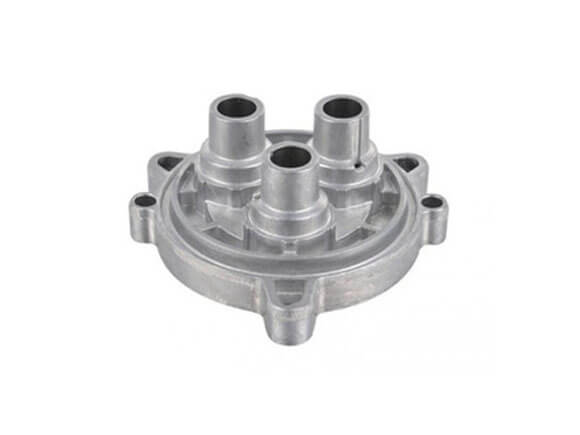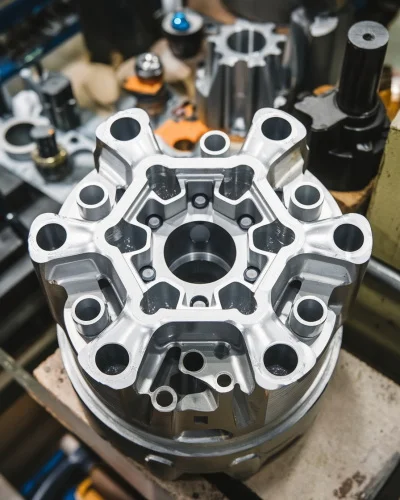Exploring how an Aluminum Foundry delivers high-quality results
Understanding the Environmental Benefits of Aluminum Factory Techniques
Aluminum shop techniques play a crucial duty beforehand sustainability within the production market. By carrying out advanced reusing approaches and energy-efficient techniques, these techniques greatly minimize waste and carbon impacts. Cutting-edge casting approaches better enhance resource conservation efforts. As industries increasingly prioritize environmental responsibility, understanding the full impact of these techniques comes to be essential. What details developments are blazing a trail in this transformation?
The Role of Aluminum in Lasting Production
Although numerous materials add to sustainable manufacturing, aluminum stands apart because of its special properties and recyclability. This light-weight metal is not only resilient but likewise has exceptional deterioration resistance, making it an excellent choice for numerous applications, from vehicle to construction. Its high strength-to-weight ratio results in energy savings throughout transport and usage. Light weight aluminum can be reused indefinitely without losing its integral qualities, advertising a round economic climate.
The production process of light weight aluminum has developed, including energy-efficient techniques that reduce carbon footprints. By using renewable energy sources, producers are increasingly decreasing the environmental impact related to light weight aluminum production. Furthermore, making use of recycled aluminum needs substantially less power compared to removing and fine-tuning main light weight aluminum, leading to lower greenhouse gas discharges. As markets seek sustainable services, aluminum's adaptability and environmentally friendly features position it as a pivotal product in the pursuit of greener production techniques.
Advanced Recycling Techniques in Light Weight Aluminum Foundries
Advanced recycling strategies in aluminum factories are changing the way scrap light weight aluminum is refined and recycled. Ingenious approaches, such as closed-loop recycling systems, enable foundries to reclaim aluminum from production waste and outdated products effectively. These systems reduce material loss and improve the high quality of recycled light weight aluminum, making it a sensible alternative to main light weight aluminum manufacturing.
Additionally, progressed sorting modern technologies, consisting of automated optical sorting and X-ray fluorescence, enhance the separation of aluminum from other materials, making certain higher pureness levels in recycled results. This precision decreases contamination, which can compromise the stability of the end product.
The integration of sophisticated melting technologies, such as induction melting and energy-efficient heating systems, improves the recycling procedure, decreasing power intake. Jointly, these advancements contribute to a more sustainable light weight aluminum market by lowering reliance on virgin materials and lowering greenhouse gas emissions connected with aluminum manufacturing.
Energy Efficiency Improvements in Factory Workflow
Energy effectiveness enhancements in light weight aluminum factory operations can substantially improve sustainability practices. Applying waste warmth recuperation systems enables foundries to repurpose excess energy, reducing total energy consumption. Furthermore, improvements in process automation enhance operations, causing decreased waste and optimized resource use.
Waste Warmth Healing
Implementing waste heat recovery systems in light weight aluminum factories significantly boosts energy efficiency by catching and recycling excess thermal energy produced during production procedures. These systems facilitate the conversion of thrown away warm right into useful energy, which can be made use of for different applications within the foundry, such as powering or preheating materials devices. By recovering heat that would certainly otherwise be gotten rid of right into the environment, shops can considerably lower their total energy intake and greenhouse gas discharges. This strategy not only reduces functional prices but likewise promotes lasting techniques within the sector. Furthermore, the adoption of waste warmth recovery innovations aligns with governing standards aimed at lowering environmental effect, making it a crucial component of contemporary light weight aluminum foundry procedures.
Process Automation Advantages
Automating processes in light weight aluminum foundries can significantly boost energy efficiency by maximizing manufacturing operations and minimizing waste. By implementing advanced modern technologies such as robotics and artificial intelligence, shops can improve operations, minimizing unnecessary energy consumption. Automated systems help with exact control over temperature level and product handling, making certain that power is utilized just when required. Additionally, real-time monitoring enables instant modifications, minimizing the danger of energy loss. The integration of automation not only boosts productivity but also decreases functional prices, making factories much more affordable. As an outcome, these energy-efficient practices add significantly to sustainability goals, lowering the environmental footprint of aluminum manufacturing while fulfilling boosting market needs - Precision aluminum casting. Boosted power effectiveness through automation stands for an essential step in the direction of greener factory procedures
Minimizing Waste Through Cutting-edge Casting Approaches
Ingenious spreading methods play a vital duty in minimizing waste in aluminum shops. Techniques such as sophisticated molding and the usage of recyclable materials greatly lessen manufacturing scrap. These methods not only his comment is here boost efficiency however additionally contribute to a much more sustainable production process.
Advanced Molding Techniques
As sectors increasingly prioritize sustainability, progressed molding methods in aluminum factories arise as effective services for minimizing waste. These innovative approaches, such as 3D printing and precision mold production, considerably enhance the efficiency of the spreading process. By making use of computer-aided style (CAD) and simulation modern technologies, suppliers can optimize mold and mildew geometry, decreasing product use while maintaining item integrity. In addition, progressed techniques make it possible for the production of complex shapes that conventional methods can not attain, reducing the need for additional machining and thereby decreasing scrap material. The adaptability of these techniques enables rapid prototyping, more lowering lead times and power consumption. Generally, the application of sophisticated molding methods stands for an important step toward environmentally responsible light weight aluminum manufacturing, lining up with worldwide sustainability goals.
Recyclable Material Usage
Recyclable materials play a pivotal role in reducing waste within aluminum shops, transforming the spreading landscape via their effective application. By incorporating scrap light weight aluminum and other recyclable components into the production process, shops can substantially lower the need for virgin products. This not only conserves natural deposits however additionally lessens energy intake related to mining and refining. Cutting-edge casting techniques, such as die spreading and sand spreading, enable for seamless integration of these products, making sure high-grade outputs. Furthermore, making use of recyclable materials fosters a round economic climate, where resources are consistently reused and repurposed, minimizing garbage dump payments. Ultimately, the tactical use of recyclables enhances sustainability while promoting cost-effectiveness in light weight aluminum factory procedures.
Reducing Production Scrap

Life Cycle Evaluation of Light Weight Aluminum Products
Aluminum is commonly identified for its lightweight and sturdy buildings, a comprehensive Life Cycle Evaluation (LCA) reveals the ecological influences linked with its usage, disposal, and manufacturing. The LCA procedure checks out the energy consumption, greenhouse gas discharges, and source depletion connected to aluminum products from extraction of bauxite ore to end-of-life monitoring. Primary aluminum production is energy-intensive, commonly relying upon fossil fuels, which contributes significantly to carbon impacts. On the other hand, reusing light weight aluminum uses substantial ecological benefits, as it makes use of just a portion of the energy required for main manufacturing. click for info Moreover, the reusing procedure minimizes landfill waste and saves all-natural sources. The LCA additionally takes into consideration the product's long life and possibility for reuse, highlighting the value of lasting design. Overall, understanding the life process effects of light weight aluminum products is necessary for making informed choices that prioritize environmental sustainability within the sector.
Instance Studies: Successful Sustainable Practices in the Market
The light weight aluminum sector has actually started to embrace cutting-edge lasting techniques that attend to the ecological challenges determined in Life process Assessments. One remarkable case is a leading factory that applied a closed-loop recycling system, substantially reducing waste and energy usage. By reusing scrap light weight aluminum in manufacturing, the center achieved a 40% reduction in its carbon footprint.
One more example includes a producer that adopted eco-friendly energy sources, powering its procedures with solar and wind energy - Precision aluminum casting. This shift not just lowered greenhouse gas discharges yet also enhanced the firm's credibility amongst ecologically mindful customers
Furthermore, a 3rd foundry has spent in sophisticated spreading methods, which maximize product use and minimize issues, better lowering resource intake. These situation studies show that the aluminum market can incorporating lasting practices, showing both ecological responsibility and economic practicality, inevitably adding to a much more lasting future.
Frequently Asked Inquiries
Just How Does Aluminum Contrast to Other Metals in Sustainability?
Light weight aluminum is normally considered a lot more lasting than numerous steels as a result of its recyclability, lower energy requirements for manufacturing, and minimized environmental influence. Its lifecycle effectiveness exceeds that of steel and copper in different applications.
What Is the Carbon Impact of Aluminum Foundry Processes?
The carbon footprint of light weight aluminum shop procedures differs, typically ranging from 4 to 15 statistics lots of CO2 per lots of aluminum produced. Aspects affecting this include energy resources, modern technology, and the efficiency of operations.
Are There Wellness Threats Connected With Light Weight Aluminum Shop Operations?

What Are the Costs Associated With Lasting Light Weight Aluminum Techniques?
The expenses related to sustainable light weight aluminum techniques consist of higher preliminary financial investments in innovation, possible boosts in operational expenses, and recurring maintenance. Nonetheless, these are usually countered by long-term cost savings and minimized ecological effect.
Exactly How Does Aluminum Recycling Effect Local Communities?
Light weight aluminum reusing positively impacts neighborhood communities by creating tasks, lowering land fill waste, and decreasing energy prices. It promotes financial growth and advertises environmental stewardship, bring about healthier living conditions and improved area engagement in sustainability campaigns.
Furthermore, the use of recycled light weight aluminum requires significantly less energy contrasted to extracting and improving key light weight aluminum, leading to reduced greenhouse gas discharges. Advanced reusing techniques in aluminum factories are transforming the method scrap aluminum is refined and recycled. Aluminum Foundry. Implementing waste warm healing systems in light weight aluminum shops considerably enhances energy effectiveness by recording and reusing excess thermal power generated throughout manufacturing procedures. Automating processes in light weight aluminum shops can considerably enhance energy effectiveness by enhancing manufacturing operations click to read and minimizing waste. The carbon footprint of light weight aluminum factory processes varies, usually varying from 4 to 15 metric lots of CO2 per lot of light weight aluminum created